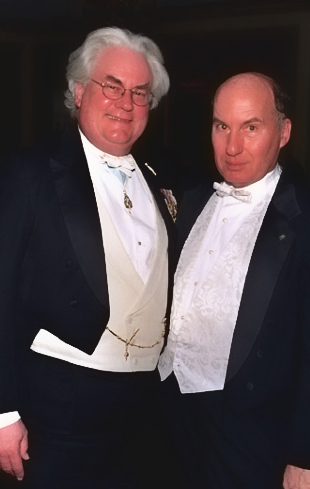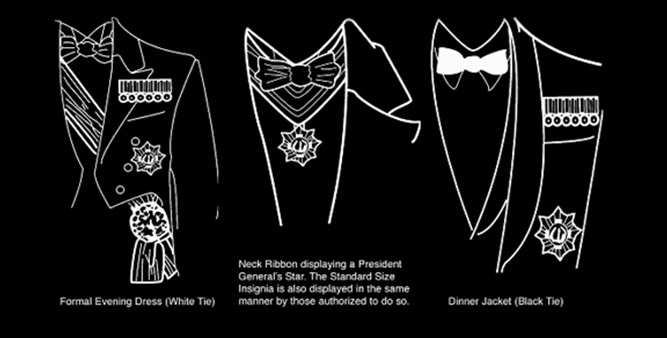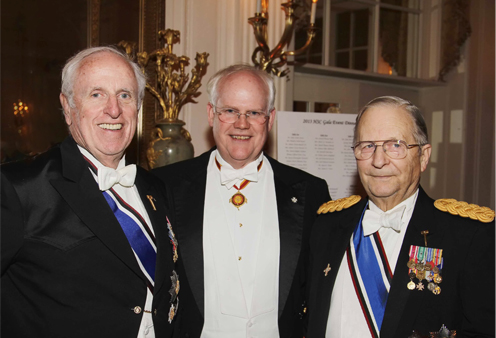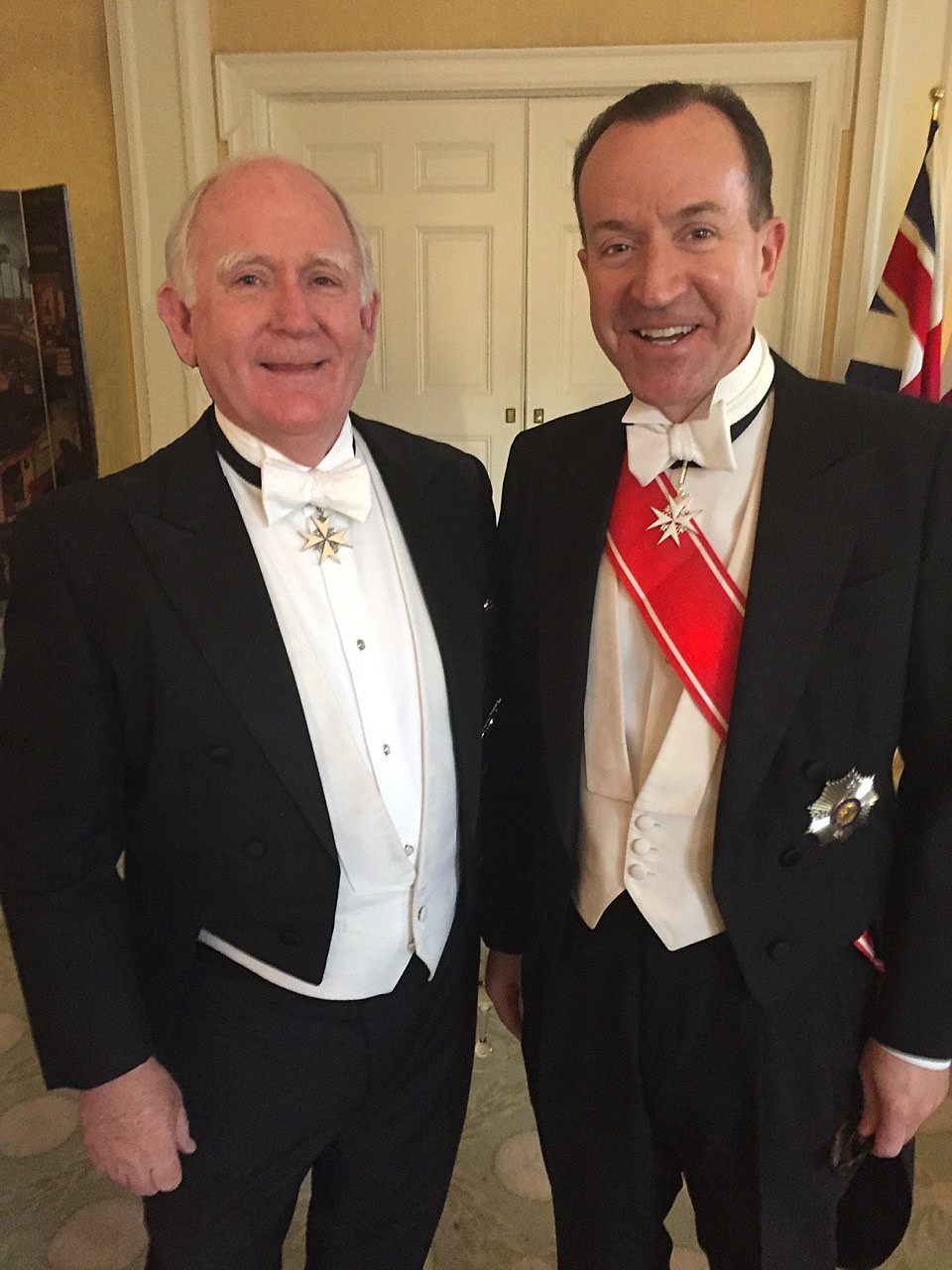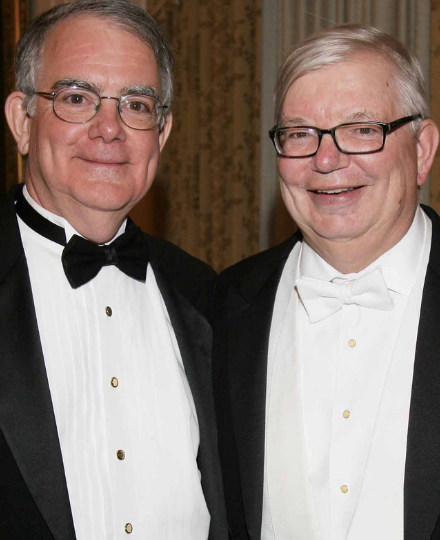Insignia And Decorations For Gentlemen
It is recommended that the insignia and decorations of the hereditary community be worn as prescribed below in keeping with customs and tradition:
Standard Insignia:
The standard or full size insignia is worn by members on formal occasions, centered on the left lapel or breast of the coat, about four inches below the top of the shoulder. If more than one standard medal is displayed, the insignia of the most senior organization, by date of founding, is mounted toward the wearer's right side. The top edge of all medals should be on an even line. No more than three standard size insignia should be worn simultaneously.
Members of most societies who are or have been officers, either on a national or state level, may wear the medal pendant from a neck ribbon in the societies' colors. Some of the larger societies also permit chapter presidents to wear the insignia pendant from the neck. When worn with formal evening attire, the medal is to be drawn up close below the knot of the bow tie.
The insignia may be worn with informal clothing such as a sack suit or blazer. It is also appropriate for use upon a cut-away or military uniform. When worn on a uniform, the regulations of the appropriate branch of military or naval services govern the permission and proper placement of the insignia. Certain hereditary society medals have been approved for this purpose. The standard size insignia is never worn with any type of miniature except on occasions when the larger medal is suspended from the neck.
